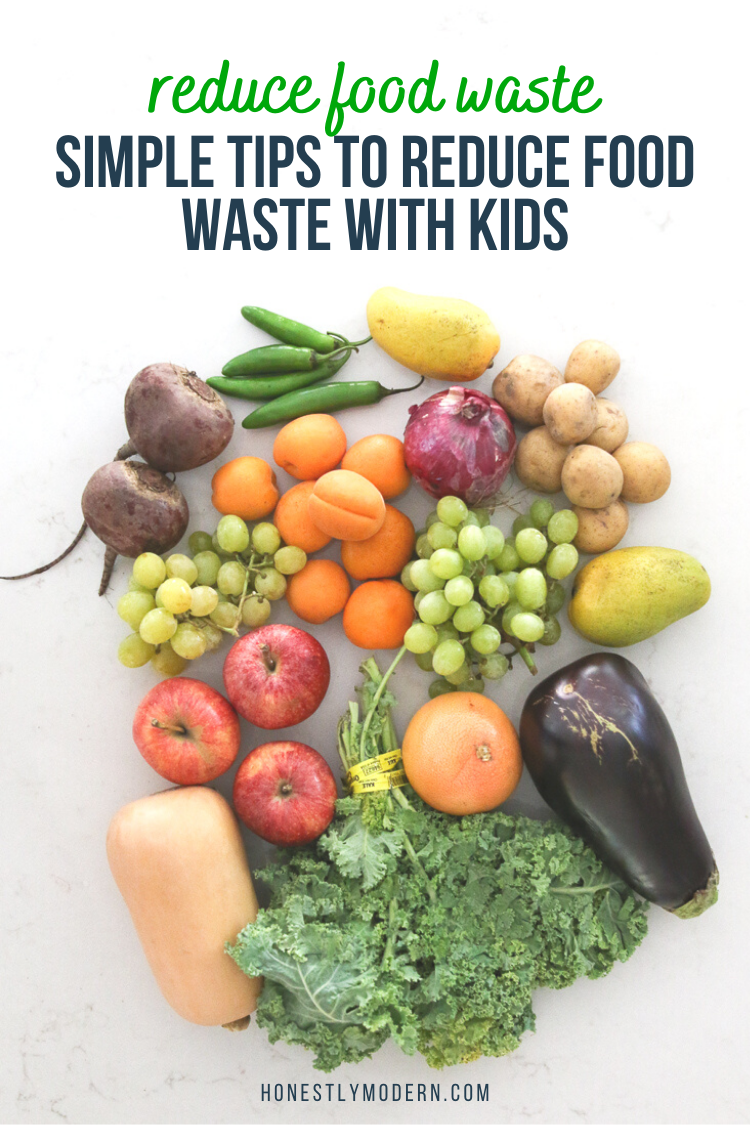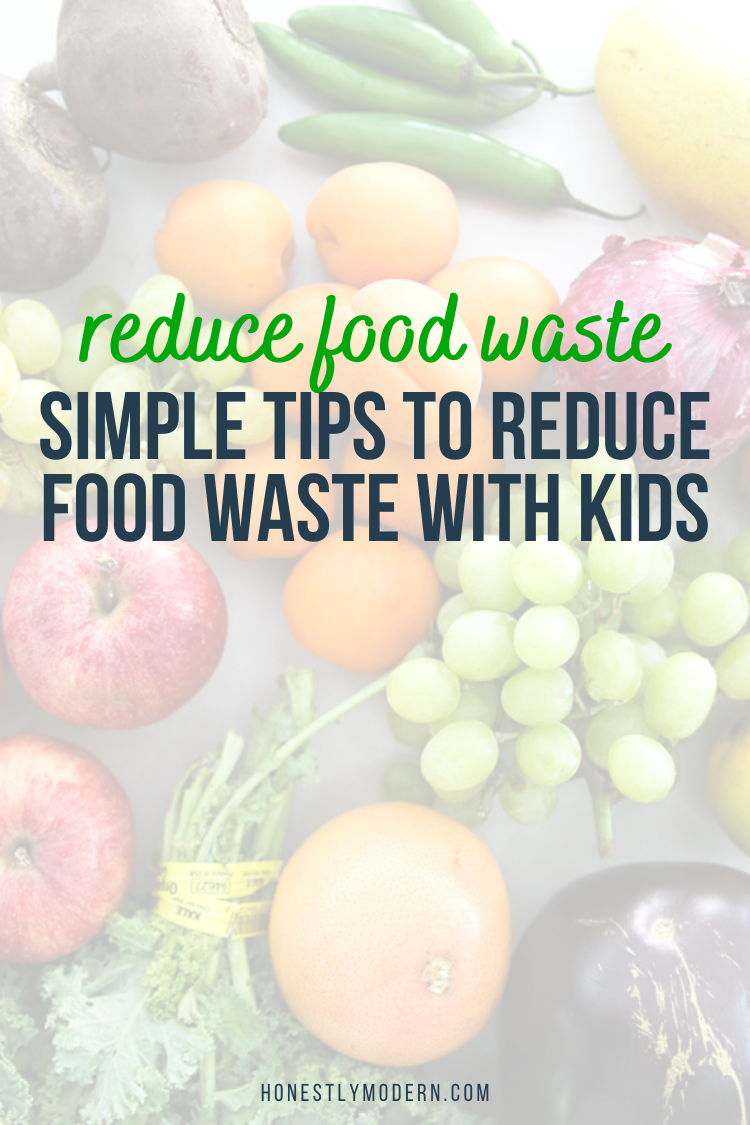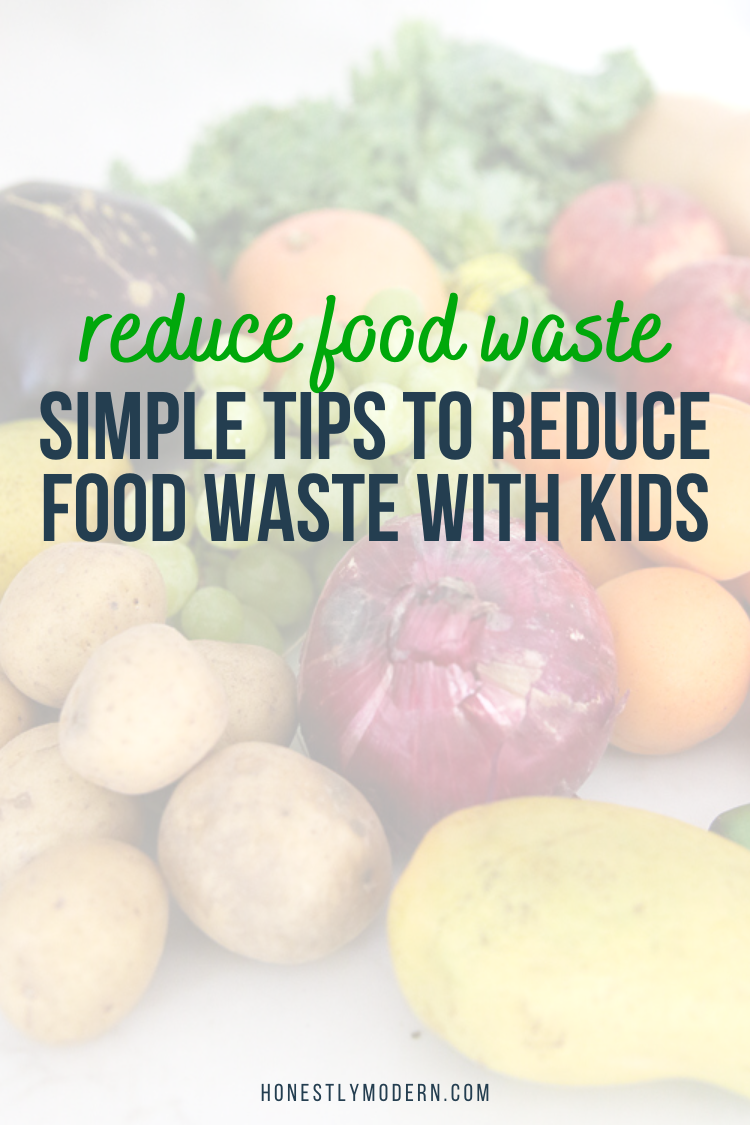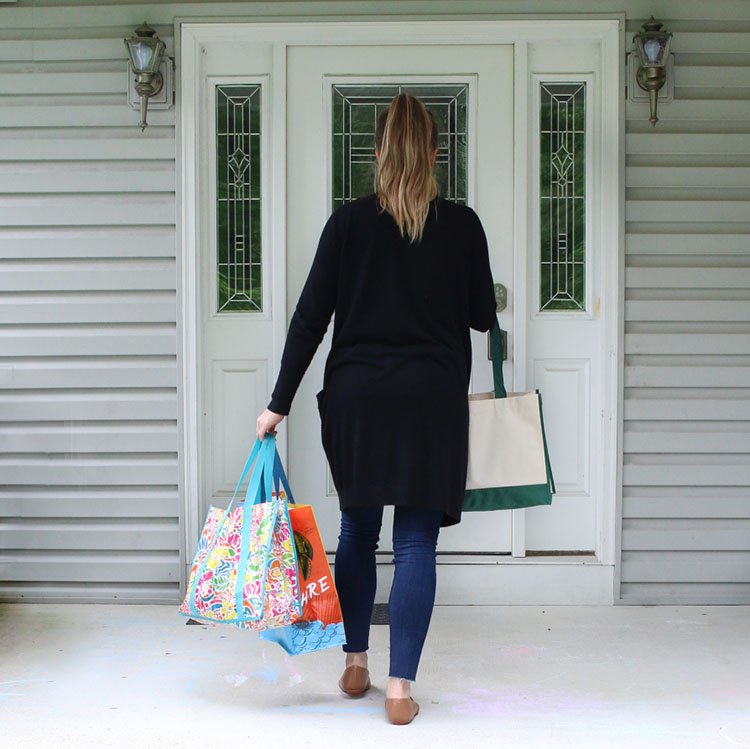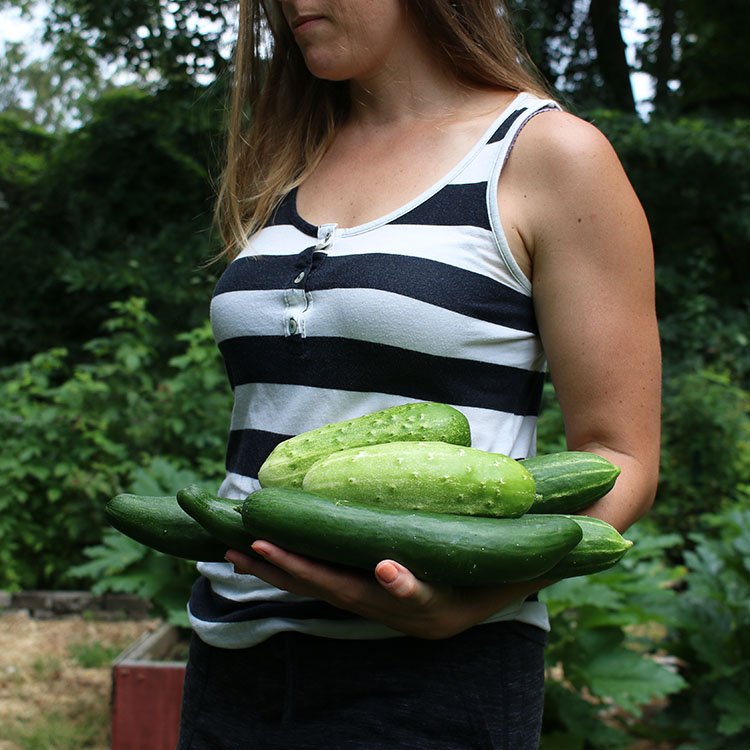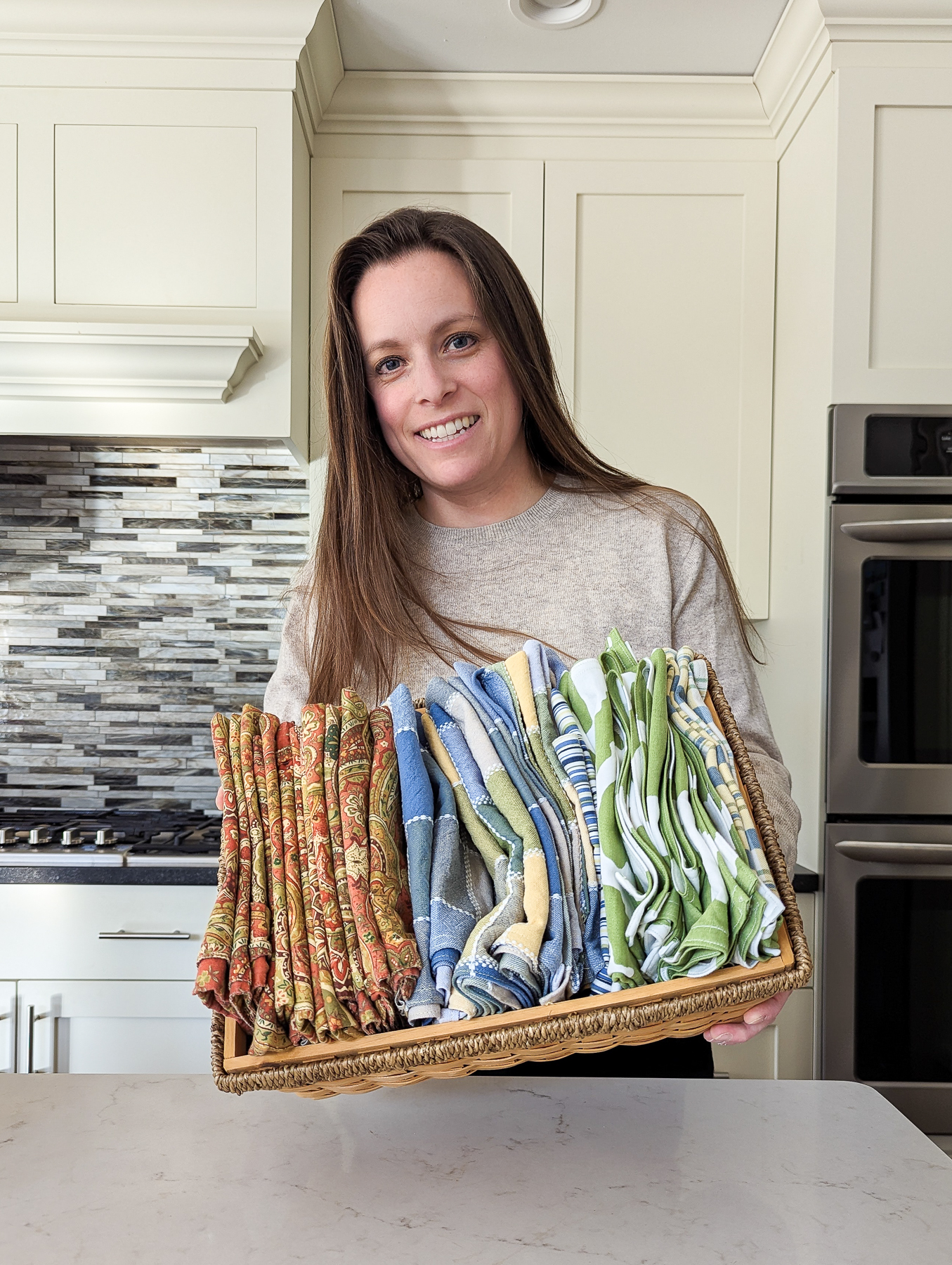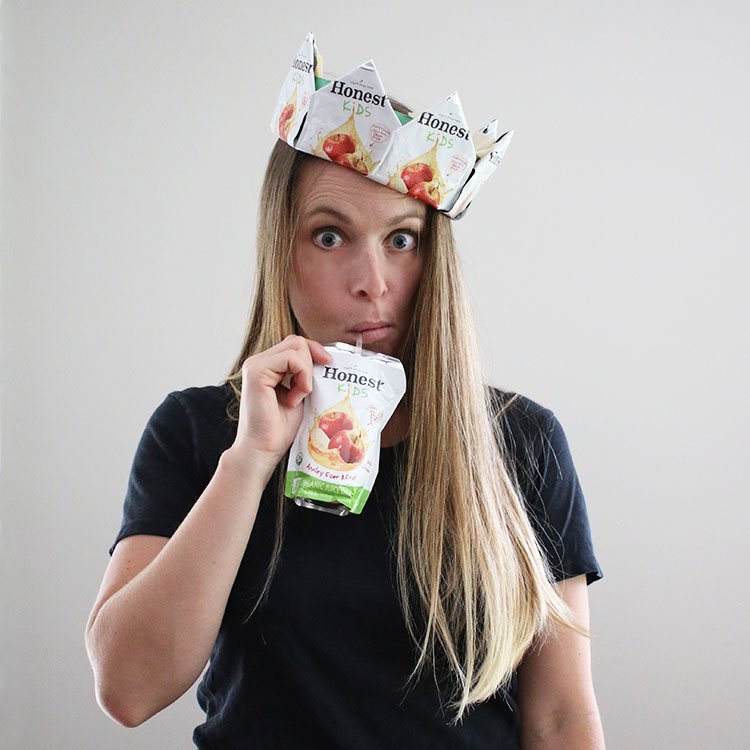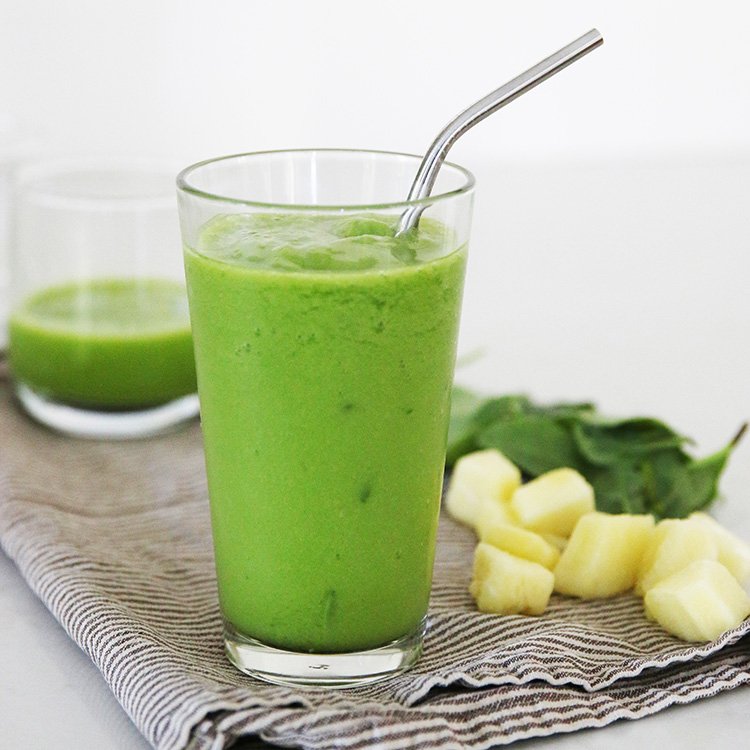Simple Tips To Reduce Food Waste With Kids
Reducing food waste with kids can be a tricky balance. We want kids to try new foods and explore our culinary creations. We also don’t want to throw away mountains of food they refuse to eat. Read on for 10 tips to reduce food waste with kids (even picky eaters!).
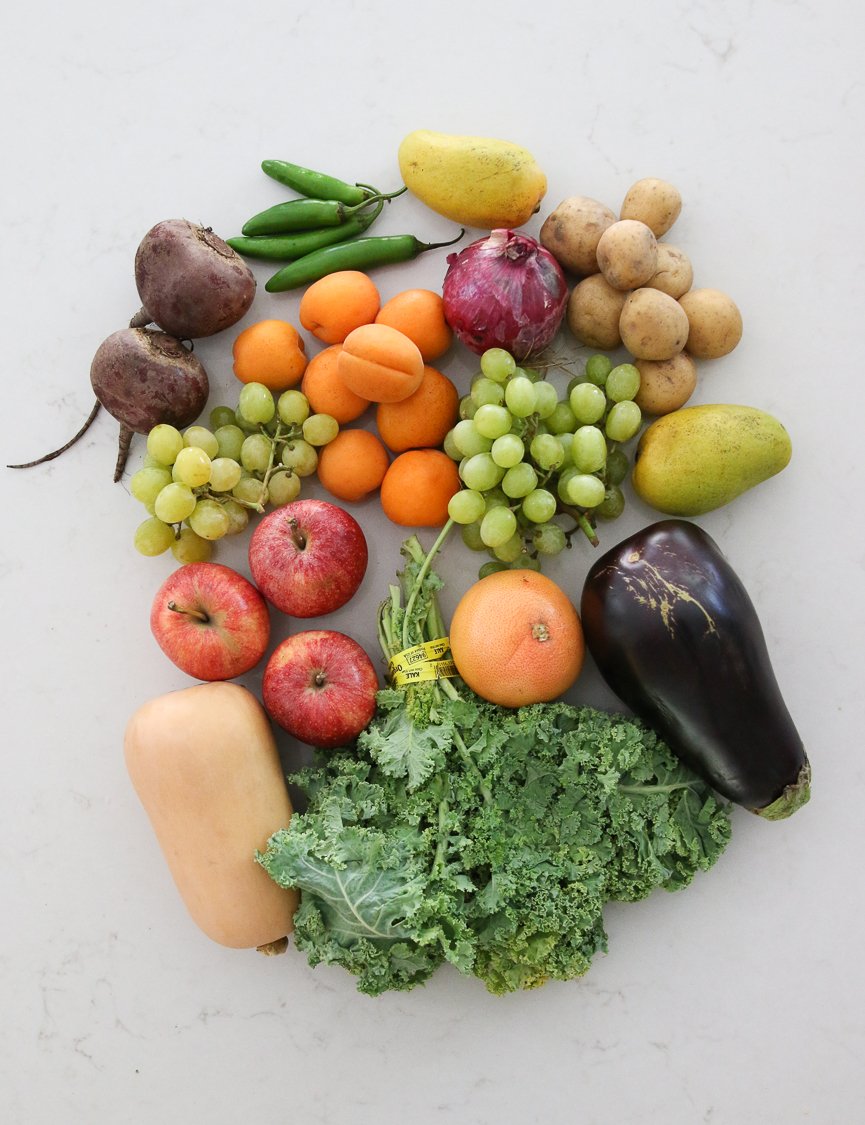
This post contains affiliate links which have no impact on your purchase price.
I was a picky eater. I’m still a bit finicky about certain foods. I can find something to eat on just about every menu, but I’m not all that adventurous when it comes to fine dining.
No surprise, one of my boys is a fairly picky eater too. I guess the apple doesn’t fall far from there tree.
Despite the limitations posed by our preferences, we still make a concerted effort to reduce food waste in our home. Over the years, we’ve gathered up a plethora of tips and tricks to limit the amount of food we throw in the trash.
Why It’s Important To Reduce Food Waste
Food waste is a pretty big deal in our country (and the world). Food waste is expensive, leaves people unnecessarily hungry, and clogs up our landfills with organic matter that doesn’t properly dispose.
In our landfills, food waste generates methane gas, a greenhouse gas that is much more potent than carbon dioxide. Thus, reducing food waste not only minimizes wasted resources that go into producing food but also helps limit global warming.
Reducing food waste is a giant win all around for people and our planet. Albeit it’s not the only source of dysfunction in our food supply and probably not the largest, it’s a worthy cause for taking individual action to be more responsible stewards to our communities and the health of our planet.
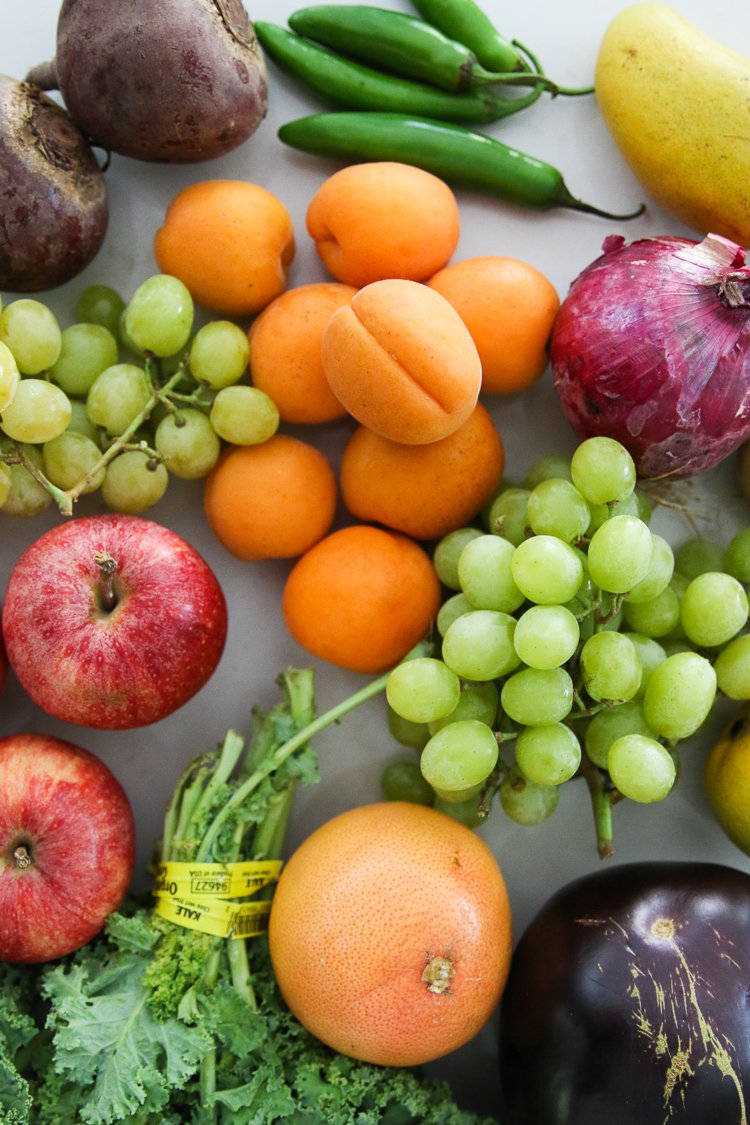
10 Tips To Reduce Food Waste With Kids
Now that I’ve set the stage for why it’s so important to reduce food waste, let me order up ten tips to help you reduce food waste with kids at your table. Limiting food waste with little mouths to feed might be a bit more challenging, but it’s definitely possible. So without further ado, enjoy these ten tips to reduce food waste with kids.
Make Smaller Portions
When filling a plate for a child, remember that they’re small and unpredictable. Some days, their little bodies don’t need a whole lot of food. Other days, they may want seconds or thirds. In our house, the boys eat like gorillas one day and like birds the next.
Start by giving your kids smaller portions. It’s easier to refill their plate with more food than save food already plated that they don’t eat.
Further, I really don’t want to discourage my kids from listening to their bodies and eating food when they aren’t hungry. If they aren’t hungry, let them follow their stomachs (so long as they know there aren’t loads of snacks later). Don’t make them eat when they aren’t hungry.
Smaller portions help kids eat just enough to fill their bellies and prevent food from ending up the trash, especially when it’s a meal that doesn’t really heat up well as leftovers.
Save The Small Bits
Although it may not seem like much, small bits of leftover food here and there can really add up. After a few days, you might even have enough to make a full meal.
Save leftovers and extra items even if it’s just a few pieces of food. They are perfect for snacks. Also, kids don’t always eat a lot. One baby carrot might be just the right amount to add to your child’s dinner plate on a given night, especially if it’s not their favorite food and they’re still exploring it.
We have many small containers on hand to store odds and ends of leftovers. I clean and reuse glass jars (for free!). We also have these small Pyrex containers. This set comes with a variety of smaller sizes, and we use them all the time to store food and reduce food waste in our home.
Make Snack Trays
Use up small bits of leftovers or remnants here and there by making after school snack trays with whatever is on its last leg in your kitchen. Sometimes I make these snack trays for my boys after school, and they are wonderful.
Oddly enough, I enjoy the creative process of making the tray, combining healthy food with junky snacks, and laying things out so they look nice. Presentation makes a big difference when it comes to food, even for little ones.
When we make snack trays, I often use these silicone muffins trays. They’re the perfect size for holding tiny portions of lots of different things, and the boys think it’s so novel and exciting.
I also make mini snack trays for the road sometimes. These are especially helpful on the way to evening sports practices that start not long after the boys get off the bus and blow right they’re dinner.
If I’m making mini snack trays for the road, I use these Bentgo lunch boxes to keep items separate or contained as needed. They really help prevent spills in the car. If you already have something like this, certainly use what you already have on hand. If you’re in the market for kids’ lunch boxes, the Bentgo lunch boxes work like a charm for us.
Shop Our Favorite Snack Containers // Silicone Muffin Pans | Bentgo Lunch Boxes
Track Food Waste
Use a simple chart to track the food each person wastes over a week or a couple of weeks. Be sure to include your kids in the project. This really helped my kids realize how much they don’t eat at meals. And it made each of us less willing to waste when we knew we had to write it down (psychology at it’s best…).
We tried a one-week food waste audit, inspired by Jess from Thoughtfully Sustainable. The boys created the charts by hand and were responsible for writing down anything they wasted. We all added our own waste items to the list.
My husband, of course, wasted nothing the whole week. In fact, he probably tallied an individual negative food waste balance. Like most dads and many parents, he’s basically a human garbage disposal.
Make Last Nights Dinner Leftovers Today’s Breakfast
Breakfast and dinner don’t have to consist of diabolically different genres of food. Breakfast most certainly doesn’t have to be a carb-fest (even though no one at our house ever complains about pancakes or a ‘gourmet’ French Toast Bar for breakfast).
Eat for breakfast whatever leftovers remained from dinner last night, even if it’s just a few pieces you served on their plate and they didn’t finish. Who said breakfast couldn’t be five bites of chicken and rice with a side of strawberries?!
Make Eating Fun
We all know that kids like to have fun. And encouraging children to behave in a way that we want them to behave is much easier if we make things silly and fun. Parenting experts call this behavioral momentum.
Consider making the meal a game to see who can eat the most different types of food or who can eat the most colorful meal. Maybe play the alphabet game with dinner to see who could eat up leftovers with different types of foods that start with different letters.
Of course not every meal has to be the Olympics of kid-friendly dinners, but it can help right the ship on a particularly tough night and help kids eat when they’re hungry but too distracted by frustration to put a fork in it.
I’ve seen many parents use fun utensils, toothpicks, cups, and straws to lighten up the dinner affair. We’ve even played Hangman during dinner with a little twist. The boys had to take one bite of dinner to earn each letter guess. It’s basically family-dinner magic because they eat, we all have fun, and it’s a good challenge for their brain.
We play Hangman on our Writey Board. It’s essentially a giant whiteboard sticker on our wall next to the kitchen table. Hangman aside, the Writey Board was super easy to set up and has been amazing for our family. I highly recommend it!
Share Meals At Restaurants
Most kids won’t eat an entire restaurant meal. Even kids’ meals are large for younger kids. Don’t be afraid to let your kids share meals, even kids’ meals.
Sometimes we share “adult” meals with our kids. The more we expose kids to “real food”, the less likely they’ll still be stuck on chicken fingers and macaroni and cheese as they get older.
Let get them acquainted with the “real menu” and explore foods. You never know what they might realize they like.
Eat The Same Thing Several Days In A Row
Maybe you want to make a big batch of something and use it up. Maybe you found the secret recipe that your kid loves and wants for lunch every day for three weeks. (I know… I’ve been there.) Whatever the case, there are no meal police preventing us from eating the same thing day in and day out.
Some people might find eating routines pitifully boring. But if your kid wants to eat the same lunch fifteen days in row (and it’s not complete garbage), so be it. Let them eat cake… or probably not actual cake, but you get the gist.
Sometimes eating the same thing for many days prevents a variety of leftovers from building up in our fridge. Let it be and let them eat, so long as it’s not all ending up in the trash.
Homemade “Lunchables” to Also Use Up Small Bits
As another version of the snack tray, we make homemade “Lunchables” for the boys. These can be great vehicles for using small portions of anything in the fridge.
After seeing a few kids at school bring Lunchables to school, my boys asked if they could also easy them. They weren’t the right choice for our family, so I declined the request. But I counteroffered with making our own version of Lunchables.
Now, they sometimes bring pizza “Lunchables” to school, which include little portions of pepperoni, shredded cheese, sauce (pizza or marinara), and naan. I pair this with just a couple slices of a fruit or veggie and lunch is off to the races.
We pack their pizza Lunchables in the Bentgo lunch boxes which come in a variety of fun colors and have little containers built into the box for all the Lunchables components.
Zero Waste Leftover Charcuterie Board Meals (Saved The Best For Last)
I saved my best tip for last. The leftover charcuterie board is easily my boys’ favorite lunch or dinner and my favorite way to make sure we reduce food water. I think my boys love it because they have so much autonomy about what they eat. I love it because it’s easy, fun, and no one complains about dinner. Ever!
When I have a fridge full of miscellaneous odds and ends, which often happens by the end of the week, I arrange them nicely on a cutting board. Along with my leftovers, I often add a bit of dried fruit or nuts and it’s a meal. Everyone eats a variety of snacks that are sufficient to fill us up as s full meal.
Check out all the details about our zero waste lunch or dinner charcuterie boards piled high with leftovers and perfect to reduce food waste.
Bonus Tip: Compost!
Composting doesn’t reduce the amount of uneaten food, but it does reduce the volume of food that ends up in landfills and pollutes the planet. Composting also provides major benefits to soil health, which in turn offers myriad benefits to fight climate change.
If you don’t compost already, have no fear. I interview and feature all sorts of families who compost in a variety of ways in my Bring Your Trash To Life series. Be sure to check it out.
I also have a series Everything To Know About How To Compost At Home. You can find answers to tons of questions about composting. And if you don’t see the answer, shoot me an email and I’ll get it answered in the series. Surely you aren’t there only person with that question!
Reducing food waste drives a lot of the decisions we make about grocery shopping and meal preparation in our house. I generally don’t compromise health in the name of food waste prevention, but it definitely informs what I decide to buy each week and add to our weekly low waste meal plans.
Do you have any other ideas to reduce food water with kids at the table? I’d love to hear them. Share in the comments!

